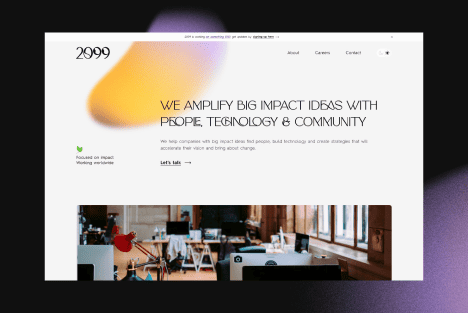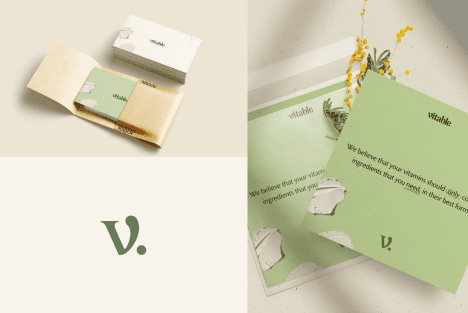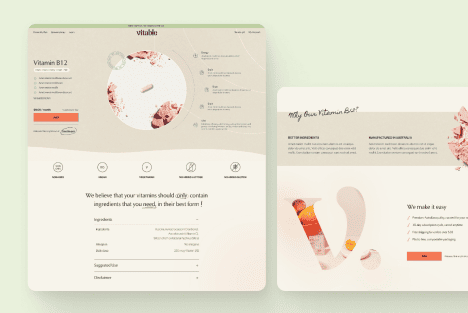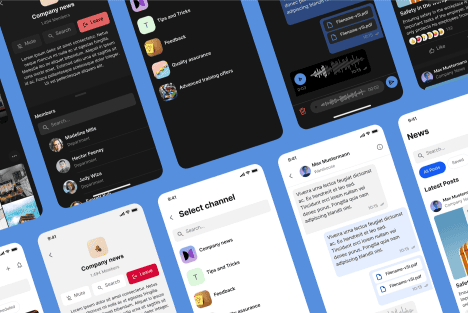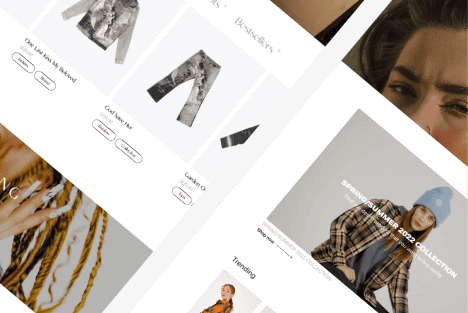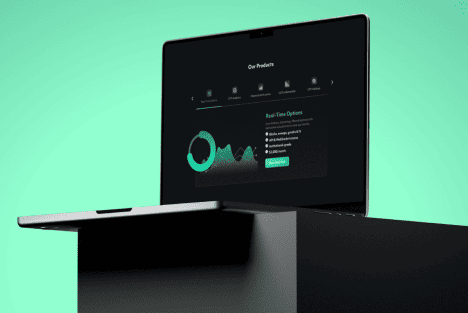The Types of Digital Art Styles and How to Use Them for Your Brand
Did you know the average consumer only takes 50 milliseconds to judge the visual appeal of your brand? In today’s visually driven world, the colors and digital art styles you choose can make or break your brand recognition. At Almax Design Agency, we understand the power of different types of digital art in creating compelling and memorable brand images. This blog will explore various digital art styles and how they can be effectively utilized to elevate your brand. We’ll delve into the unique characteristics of each style, provide real-world examples of successful brands, and offer practical tips on integrating these styles into your branding strategy to create a strong, cohesive, and impactful visual identity.
Introduction to Digital Art Styles: Enhancing Your Brand’s Visual Identity
Types of Digital Art
Abstract Art: Conveying Emotions and Ideas Through Bold Designs
Abstract art is all about using shapes, colors, and forms to evoke emotions and convey ideas. This style does not focus on realistic depictions but rather on the emotional and aesthetic impact of the design. For brands, abstract art can be a powerful way to make a bold statement and create a memorable visual identity.
Applications of Abstract Art in Branding
- Logos: Abstract logos can create a unique and eye-catching brand mark that stands out and leaves a lasting impression.
- Marketing Materials: Use abstract designs in brochures, flyers, and ads to grab attention and evoke strong emotional responses.
- Social Media Graphics: Abstract art can help your social media posts stand out in a crowded feed, attracting more engagement and followers.
Benefits of Abstract Art
- Versatility: Abstract art can be adapted to various formats and media, making it a flexible choice for different branding needs.
- Emotional Impact: The use of colors and forms in abstract art can evoke deep emotions, helping to create a strong connection with your audience.
- Memorability: Bold and unique designs can make your brand more memorable, increasing brand recall and recognition.
Simplified Art Style: The Power of Minimalism in Digital Art
The simplified art style, also known as minimalism, focuses on clean lines, basic shapes, and limited color palettes. This approach can make your brand appear modern, sophisticated, and easy to understand. Minimalist designs are highly versatile and can be used across various platforms to maintain a consistent brand image.
Advantages of a Simplified Art Style
- Clarity: Simple designs are easy to understand and recognize, ensuring that your message is communicated effectively.
- Versatility: Minimalist designs work well in both digital and print formats, providing a cohesive look across all media.
- Timelessness: Minimalist designs tend to remain stylish over time, avoiding the risk of becoming outdated quickly.
Implementing Minimalism in Branding
- Logos: A minimalist logo can create a strong and recognizable brand identity that is easy to reproduce across various media.
- Website Design: Simplified layouts and clean design elements can enhance user experience and improve navigation.
- Packaging: Minimalist packaging can convey elegance and sophistication, making your products more appealing to consumers.

Realism: Creating Authentic and Relatable Brand Imagery
Realism in digital art aims to create lifelike images that are authentic and relatable. This style is ideal for brands that want to showcase their products or services in a true-to-life manner. Realistic art can help build trust and credibility with your audience by providing a clear and accurate representation of what your brand offers.
Applications of Realism in Branding
- Product Images: Showcasing items in a detailed and lifelike manner can help consumers make informed purchasing decisions.
- Marketing Campaigns: Creating believable scenarios that resonate with the audience can enhance the effectiveness of your campaigns.
- Website Design: Using realistic visuals can enhance user experience and engagement, making your site more appealing and trustworthy.
Benefits of Realism
- Authenticity: Realistic images provide an accurate representation of your products or services, building trust with your audience.
- Relatability: Lifelike visuals can help consumers connect with your brand on a personal level.
- Detail: Realism allows for detailed and high-quality visuals that can enhance the overall look of your brand.
Vector Art: Clean and Scalable Graphics for Versatile Branding
Vector art styles use mathematical equations to create images that are clean, scalable, and versatile. This style is perfect for logos, icons, and other graphics that need to be resized without losing quality. Vector illustration styles ensure that your brand’s visuals remain sharp and professional across all media.
Advantages of Vector Art
- Scalability: Images can be resized without loss of quality, making them perfect for various applications from business cards to billboards.
- Versatility: Suitable for both digital and print use, ensuring a consistent look across all platforms.
- Consistency: Ensures uniformity in brand visuals, helping to maintain a cohesive brand image.
Implementing Vector Art in Branding
- Logos: Vector logos can be easily resized and adapted to different media, ensuring they always look sharp and professional.
- Icons: Use vector icons in your website and app design for a clean and modern look.
- Marketing Materials: Vector graphics can be used in brochures, flyers, and advertisements to create high-quality visuals.
Illustration Art Style: Telling Your Brand Story Through Custom Illustrations
Custom illustrations can bring your brand story to life in a unique and engaging way. Illustration art styles allow for a high degree of creativity and personalization, making your brand stand out. Whether you need character designs, scenes, or conceptual art, illustrations can effectively communicate your brand’s narrative and values.
Uses of Illustration Art
- Storytelling: Custom illustrations can create engaging narratives that resonate with your audience, making your brand more relatable and memorable.
- Brand Mascots: Designing characters that embody your brand’s personality can create a unique and recognizable brand identity.
- Educational Content: Use illustrations to simplify complex information, making it more accessible and engaging for your audience.
Benefits of Illustration Art
- Creativity: Illustrations offer endless possibilities for creative expression, allowing you to convey your brand’s unique personality and values.
- Personalization: Custom illustrations can be tailored to your brand’s specific needs, making them a powerful tool for differentiation.
- Engagement: Engaging visuals can capture the attention of your audience, encouraging them to interact with your content.
3D Art: Adding Depth and Dimension to Your Brand’s Visuals
3D art adds depth and dimension to digital images, creating a more immersive and engaging experience. This style is great for brands that want to showcase products in a realistic and dynamic way. 3D visuals can be used in advertising, websites, and virtual reality applications to create a lasting impression.
Benefits of 3D Art
- Realism: Provides a lifelike representation of products or scenes, enhancing the credibility of your brand.
- Engagement: Dynamic and immersive visuals can capture the audience’s attention and encourage interaction.
- Innovation: Positions your brand as forward-thinking and modern, appealing to tech-savvy consumers.
Applications of 3D Art
- Product Showcases: Use 3D models to provide a detailed and realistic view of your products, helping consumers make informed decisions.
- Virtual Reality: Create immersive experiences that allow customers to explore your products or services in a virtual environment.
- Advertising Campaigns: Enhance your ads with dynamic 3D visuals to create a lasting impact.
Pop Art: Infusing Vibrancy and Playfulness into Your Brand
Pop art is characterized by bright colors, bold lines, and a playful aesthetic. This style can infuse your brand with energy and excitement, making it appealing to a younger or more eclectic audience. Pop art is ideal for brands that want to convey a sense of fun and creativity.
Applications of Pop Art
- Advertising Campaigns: Create eye-catching and memorable ads that stand out in a crowded market.
- Product Packaging: Use vibrant and playful designs to make your products stand out on the shelves.
- Social Media: Engage audiences with bold and colorful content that captures their attention.
Benefits of Pop Art
- Vibrancy: Bright colors and bold designs can make your brand more appealing and memorable.
- Playfulness: A playful aesthetic can create a fun and engaging brand personality.
- Cultural Relevance: Pop art often incorporates elements of popular culture, making it relatable to a wide audience.
Pixel Art: Nostalgic Designs with a Modern Twist
Pixel art uses tiny squares, or pixels, to create images that have a nostalgic, retro feel. This style is perfect for brands that want to evoke a sense of nostalgia while maintaining a modern edge. Pixel art can be used in video games, apps, and marketing materials to create a unique and memorable visual identity.
Benefits of Pixel Art
- Nostalgia: Appeals to audiences who have a fondness for retro aesthetics, creating an emotional connection.
- Simplicity: Uses simple shapes to create detailed images, making it a versatile and accessible style.
- Versatility: Works well in digital formats, particularly in gaming and tech industries.
Applications of Pixel Art
- Video Games: Use pixel art to create engaging and visually appealing game designs.
- App Design: Incorporate pixel art into your app’s interface to create a unique and memorable user experience.
- Marketing Materials: Create eye-catching ads and promotional content with a retro twist.
Typography Art: Using Text as a Visual Element to Strengthen Your Message
Typography art focuses on using text as a visual element, creating designs that are both informative and visually appealing. This style is perfect for brands that want to emphasize their message and make a strong visual statement. Typography art can be used in logos, posters, and social media graphics to enhance your brand’s communication.
Benefits of Typography Art
- Clarity: Communicates messages clearly and effectively, ensuring your audience understands your brand’s message.
- Creativity: Allows for unique and artistic text designs that can enhance the visual appeal of your brand.
- Versatility: Suitable for a variety of applications, from logos to advertising campaigns.
Applications of Typography Art
- Logos: Create unique and recognizable logos that incorporate text as a central design element.
- Posters: Design eye-catching posters that communicate your message effectively and attract attention.
- Social Media Graphics: Use creative typography to enhance your social media content and engage your audience.
Surrealism: Unleashing Creativity with Dream-like and Imaginative Designs
Surrealism uses dream-like, imaginative imagery to create designs that are fantastical and thought-provoking. This style is ideal for brands that want to push the boundaries of creativity and captivate their audience with unexpected visuals. Surrealism can be used in advertising, branding, and editorial design to create a lasting impact.
Benefits of Surrealism
- Creativity: Allows for the creation of unique and imaginative visuals that captivate the audience.
- Memorability: Dream-like and unexpected designs can leave a lasting impression, making your brand more memorable.
- Engagement: Thought-provoking visuals can encourage your audience to interact with your content and explore your brand further.
Applications of Surrealism
- Advertising Campaigns: Create captivating and imaginative ads that stand out and grab attention.
- Brand Identity: Establish a distinct and creative brand image that sets you apart from competitors.
- Editorial Content: Enhance stories and articles with dream-like illustrations that engage readers.
Choosing the Right Digital Art Styles for Your Brand: Key Considerations
When selecting digital art styles for your brand, consider the following factors:
- Brand Personality: Choose styles that reflect your brand’s character and values, ensuring that your visuals are aligned with your overall brand identity.
- Target Audience: Select styles that resonate with your audience’s preferences and expectations, helping to build a stronger connection with them.
- Message: Ensure the chosen styles effectively communicate your brand’s message, making it clear and memorable for your audience.
- Consistency: Maintain a cohesive visual identity across all platforms, ensuring that your brand’s visuals are recognizable and professional.
- Trends: Stay updated on current design trends to keep your brand relevant and appealing to your audience.
Integrating Digital Art Styles into Your Brand Strategy: Best Practices
To successfully integrate digital art styles into your brand strategy, follow these best practices:
- Consistency: Use the chosen art styles consistently across all branding materials, from logos to marketing campaigns, to create a unified and professional look.
- Collaboration: Work with skilled designers who understand your brand’s vision and can create high-quality visuals that align with your goals.
- Flexibility: Be open to experimenting with different styles to find what works best for your brand, ensuring that your visuals are always fresh and engaging.
- Innovation: Stay ahead of trends by continuously exploring new art styles and incorporating them into your branding strategy.
- Feedback: Gather feedback from your audience to refine and improve your visual strategy, ensuring that your brand’s visuals always resonate with your target market.
Conclusion: The Impact of Digital Art Styles on Brand Perception
Digital art styles have a significant impact on how your brand is perceived by your audience. By carefully selecting and integrating the right styles, you can create a strong, cohesive, and memorable brand image that drives engagement and loyalty. At Almax Design Agency, we’re here to help you navigate the world of digital art and elevate your brand to new heights. Embrace the power of digital art styles and transform your brand’s visual identity today.
